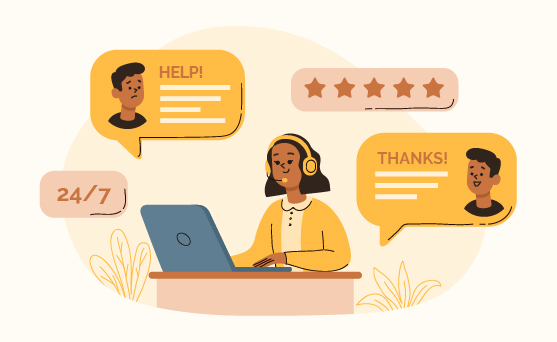Learn the Differences Between Speech to Text and Text to Speech

The sci-fi stories of the past did not accurately represent speech recognition as it exists now. But a speech to text service is more than just a potent, magical instrument; it has many practical uses that may boost corporate performance and efficiency.
While it sounds similar to speech to text technology, text to speech technology is completely different. With the help of this fantastic service, you can enhance employee development and boost productivity!
But how do both these two solutions differ? Let us understand what these solutions mean and how they differ from each other.
What does speech to text technology entail?
Being a multidisciplinary tool, speech to text technology combines computer science, engineering, and computational linguistics to enable computers to detect spoken words and convert them into written text. Using computational linguistics, an STT solution provider can recognize spoken language and convert it into text, which is referred to as computer speech recognition or speech recognition.
In essence, STT applications are nothing but automatic speech recognition (ASR) or voice to text conversion software. It is a computer-based code that categorizes auditory input and converts it into smaller bits of words using Unicode characters & voice algorithms.
How is this different from text to speech technology?
Text to speech can be considered the exact opposite of speech to text. It reads digital text out loud and is often called the "read aloud" technology. It may take words on a computer or digital device and turn them into audio.
With TTS, one can read aloud any text file, including words, pages, documents and online web pages. When reading the screen is problematic or cumbersome, you can use this technology when interacting with consumers.
Text to speech can be integrated into business to help people with vision impairment or who cannot read screen text. It also offers up new ways to use apps and information. In a nutshell, the TTS and STT services are opposite and have individual use cases in businesses.
How can TTS services help businesses?
Text to speech, an assistive technology, is another way to access the web that a business publishes. It increases the number of people accessing the content online by making it audible. Companies that use TTS technology benefit from the following:
1. Increased web presence- Websites integrated with TTS attract people with literacy issues and visual impairment and aid all populations.
2. Quick implementation with the internet of things (IoT)- TTS is crucial for the future development of businesses and a website. Users can use websites with TTS using various devices and a distinctive omnichannel TTS voice.
3. Campaign customization- Businesses can use TTS to tailor speech and voice modulation based on the type of product or service and the campaign's objectives.
4. Human-voice-like guarantee:- Many TTS providers integrate human voice qualities. By using the right TTS technology, businesses can integrate multiple accents and languages to better serve clients.

How can SST services help businesses?
On the other hand, a state-of-the-art technological option for transcription services, Speech to Text service, make it simpler and less expensive to receive the transcripts you've always wanted. By integrating speech to text solutions, businesses can benefit from:
1. Improved strategic decisions- Businesses can make better decisions based on customer mood and conversation data to improve their future serviceability and product offers.
2. Lowered expenses by automation- Businesses can save labour costs by automating the conversation analysis process, providing rapid insights into phone conversations or audio/video files.
3. Operations efficiency- Additionally, based on the conversation analytics statistics, they can assess how well the team handled the talks and create upcoming training programs for your workers. It results in enhanced customer experience and benefits for easy customer management.
4. Accuracy- Businesses can better understand their transcription with domain-specific targeted words/phrases such as addresses, currencies, and years.
Get your work done with STT Services
Businesses use speech to text and AI tools more frequently, often without realizing that these tools enable more productive operations. Despite the many advantages of speech to text, it is critical for producing the most accurate results to meet accessibility requirements and maintain professionalism.
Ready to get started? Knowlarity, an STT solution provider, provides pitch control, accurate voice and text recognition and multilingual and multi-accent support. Contact us today to find out how our speech to text service can help your business!
Written By: Manna Khare

